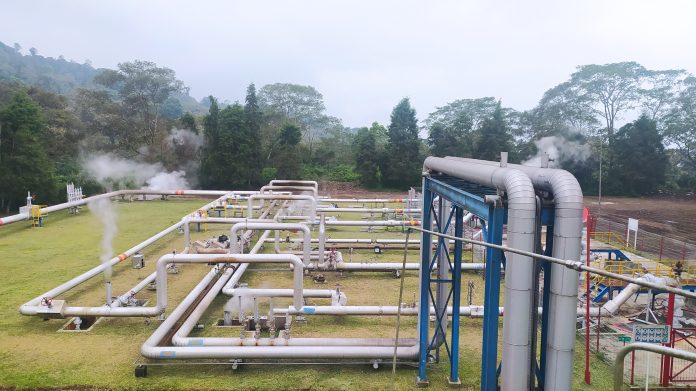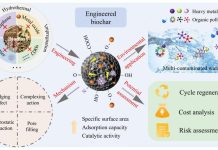In Southeast Sumatra, Indonesia, the Way Ratai geothermal system is not only known for its therapeutic hot springs but also for its significant potential in lithium extraction
As we continuously look for sustainable energy solutions, this geothermal region could play a key role in both energy generation and lithium sourcing, vital for battery technologies.
Ancient geothermal system
Recent research posted in the journal Nature has shown the mechanisms of lithium enrichment within this ancient geothermal system. By analysing water samples from various sources, including hot springs and seawater, scientists have uncovered that the geothermal water is primarily of the sodium-chloride (Na-Cl) type. This classification suggests that the geothermal reservoir is fairly deep, it also indicates that seawater plays a role in the water’s composition.
The study reveals an interaction between rainwater and seawater. Rainwater is the main contributor to the geothermal water’s makeup, but it mixes with seawater, leading to increased salinity. This heightened salinity enhances the water’s ability to dissolve lithium from surrounding rock formations during high-temperature interactions.
If mixing occurs before the water heats up, it becomes more effective at extracting valuable minerals like lithium from the rocks.
Lithium extraction
The research used various geothermometers to estimate reservoir temperatures, which range from 182°C to 227°C, increasing with depth. These findings are consistent across different analytical methods, confirming the reliability of geothermometers even in complex, seawater-influenced geothermal systems.
One of the main conclusions from the study is the role of intense high-temperature water-rock interactions with andesitic rock formations in enhancing lithium concentrations. This interaction also reduces the magnesium-to-lithium (Mg/Li) ratio, potentially making lithium extraction more economically feasible.
With its combination of geothermal energy generation and lithium extraction, Way Ratai presents a clear case for future energy strategies. As the demand for lithium rises, particularly for electric vehicle batteries and renewable energy storage, using this resource from geothermal systems could provide a double benefit: sustainable energy generation and a crucial supply of lithium.
This research not only contributes to our understanding of the Way Ratai geothermal system but also shows the potential of coastal geothermal regions in addressing future energy challenges.











